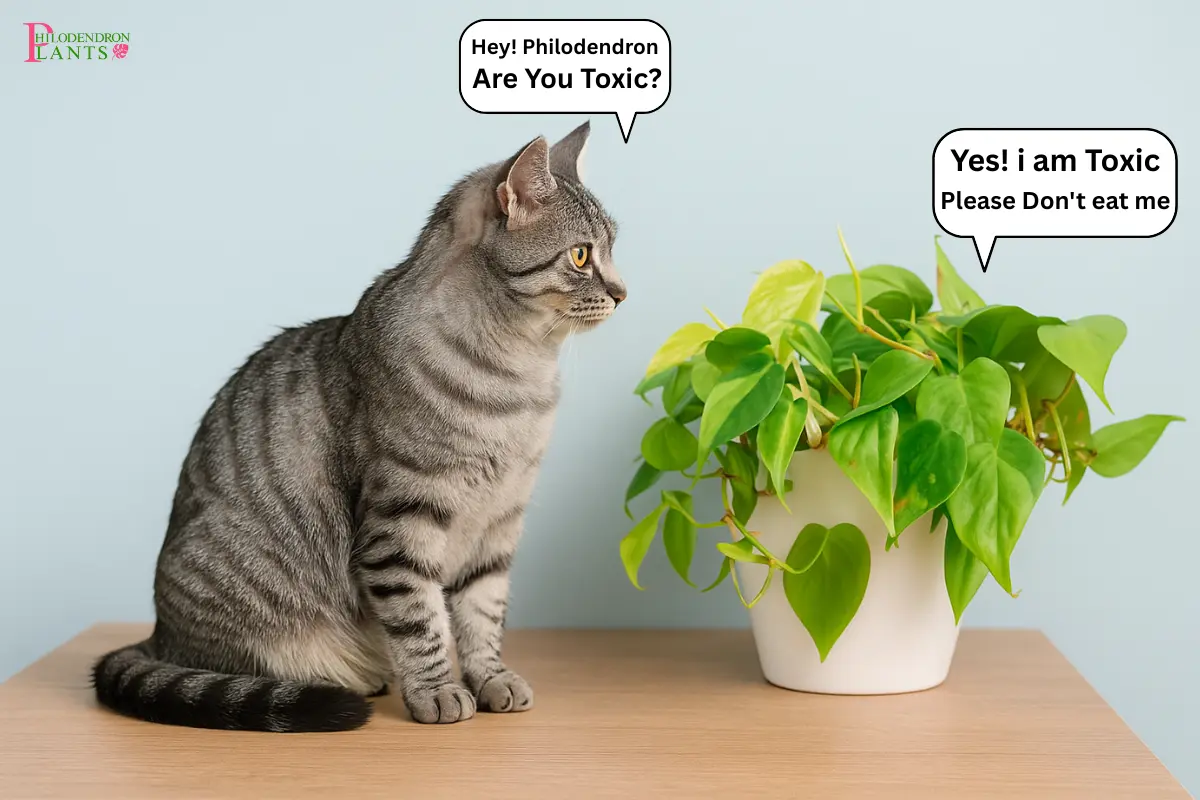Is Philodendron Brasil Toxic to Cats and Dogs? Safety Guide

You walk into the room and notice bite marks on your Philodendron Brasil—panic sets in. Is this plant toxic? Will my pet get sick? What symptoms should I watch for, and do I need to rush to the vet? As a pet owner, your furry friend’s safety is your top priority, and the fear of plant toxicity is real. This guide will answer all your concerns, from symptoms of poisoning to treatment options and preventive measures, ensuring you can keep both your pets and plants safe.
Immediate Answer
Philodendron Brasil can be toxic to pets, causing symptoms like drooling and vomiting. If you suspect poisoning, immediately call your vet or the ASPCA Animal Poison Control Center at +1-888-426-4435.
Are Philodendron Brasil Poisonous to Cats and Dogs?
Yes, Philodendron Brasil is toxic to both dogs and cats. This popular houseplant contains insoluble calcium oxalate crystals, which can cause mouth irritation, drooling, vomiting, and difficulty swallowing if ingested. If your pet chews on it, they may experience immediate discomfort, leading to pawing at the mouth, loss of appetite, or swelling. it can be extremely painful for your furry companion. Many pet owners unknowingly bring this vibrant plant into their homes, unaware of the potential risk.

Symptoms of Philodendron Poisoning in Pets
If your dog or cat nibbles on a Philodendron Brasil, you may notice immediate signs of irritation. The plant contains insoluble calcium oxalate crystals, which embed into the soft tissues of the mouth and throat, causing sharp pain. But how can you tell if your pet is affected? Watch for these symptoms:
How Soon Do Symptoms Appear?
Signs can show up within minutes of ingestion. If you notice any of these symptoms, especially swelling or breathing issues, act fast—early intervention can prevent severe complications.
Mild vs. Severe Cases
What to Do If Your Pet Eats Brasil?
The moment you realize your dog or cat has chewed on Philodendron Brasil, stay calm but act quickly. The plant’s insoluble calcium oxalate crystals can cause intense irritation, so taking the right steps immediately can prevent serious discomfort.
Immediate Home Care
When to Seek Emergency Help
Call your vet immediately if you notice severe swelling of the lips, tongue, or throat, excessive vomiting or diarrhea, signs of distress like whining or lethargy, or difficulty swallowing or refusing food and water.
📞 Who to Contact?
Most cases of Philodendron poisoning are mild, but quick action makes all the difference. Knowing when to treat at home and when to seek vet help ensures your pet’s safety.
How to Keep Your Pets Away from Toxic Plants
You love your plants, but your pet loves to chew on them. Many pet owners struggle to keep their curious cats and playful dogs away from houseplants, especially toxic ones like Philodendron Brasil.
Keep It Out of Reach
Placing your plants in areas that pets can’t easily access helps prevent them from chewing on toxic leaves. For example, try positioning your Philodendron Brasil on high shelves or hanging it from the ceiling. This way, even the most curious cat or dog won’t be able to reach it.
Use Natural Pet Deterrents
Natural deterrents like citrus peels, coffee grounds, or pet-safe bitter sprays can keep your pets away from your plants. Pets tend to dislike the strong scents, which makes them less likely to chew on the leaves. Sprinkling coffee grounds around the base of a plant or using a citrus spray can make a significant difference.
Train Your Pet to Avoid Plants
Teaching your pet to avoid plants is an effective way to stop unwanted chewing. You can use commands like “No” or “Leave it” when they approach a plant. Over time, your pet will learn that certain areas are off-limits, and they’ll begin to avoid the plants naturally.
Create a Pet-Friendly Plant Zone
Designating a separate space for safe, non-toxic plants gives your pets a chance to enjoy greenery without the risk. Plants like cat grass or spider plants are perfect for pet owners. By setting up a designated pet plant corner, your furry friend can happily explore without causing harm to themselves.
Conclusion
In conclusion, keeping your pets safe from toxic plants like Philodendron Brasil doesn’t have to be a challenge. With careful planning, simple precautions like placing plants out of reach, using deterrents, and offering safe alternatives, you can create a pet-friendly environment that protects both your greenery and your furry friends. Always remember, your pet’s safety should be your top priority, and with the right steps, you can enjoy the best of both worlds. If an emergency arises, don’t hesitate to contact your local vet or the ASPCA Animal Poison Control Center at +1-888-426-4435 for expert advice.



